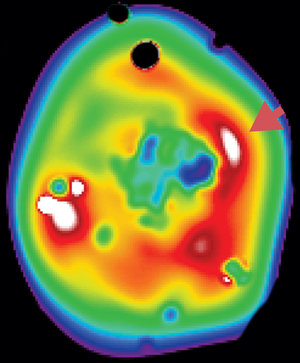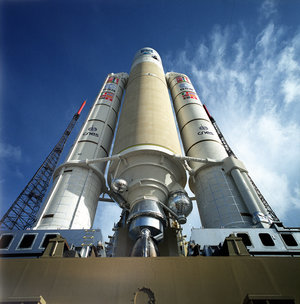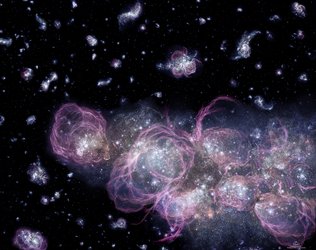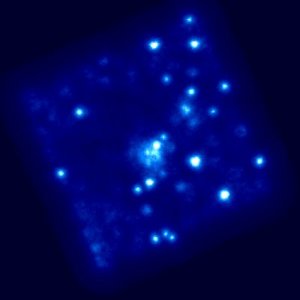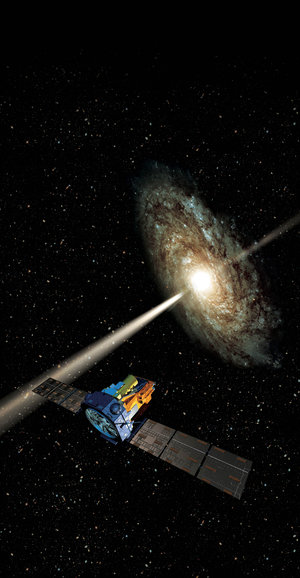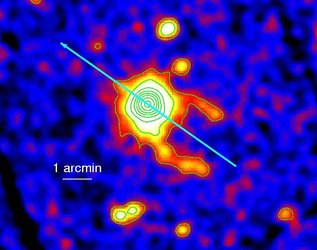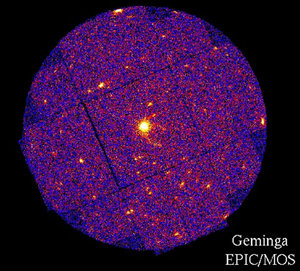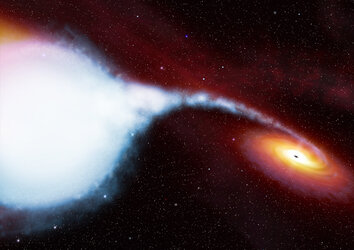Hot, massive haloes found around most spiral galaxies
Astronomers using ESA's XMM-Newton observatory have found very hot gaseous haloes around a multitude of spiral galaxies similar to our Milky Way galaxy. These 'ghost-like' veils have been suspected for decades but remained elusive until now.
Galaxy 'haloes' are often seen in so-called 'starburst' galaxies, the locations of concentrated star formation, but the discovery of high-temperature haloes around non-starburst spiral galaxies opens the door to new types of measurements once only dreamed about.
For example, scientists can confirm models of galaxy evolution and infer the star-formation rate in galaxies like our own by 'calculating backwards' to estimate how many supernovae are needed to make the observed haloes.
"Most of these ghost-like haloes have never been confirmed before in X-ray energies because they are so tenuous and have a low-surface brightness," said Ralph Tüllmann, from the Ruhr University in Bochum, Germany, lead author of the results.
"We needed the high sensitivity and large light-collecting area of the XMM-Newton satellite to uncover these haloes."

In starburst galaxies, which have prominent haloes, star formation and star death (supernovae) are concentrated in the core of the galaxy and occur during a short time period over the life of a galaxy. This intense activity forms a halo of gas around the entire galaxy, similar to a volcano sending out a plume.
So how can haloes form in the absence of intense star formation? Tüllmann's group say that the entire disk of a spiral galaxy can 'simmer' with star-formation activity. This is spread out over time and distance. Like a giant pot of boiling water, the steady activity of star formation over millions and millions of years percolates outward to form the galaxy halo.
Two of the best-studied galaxies so far out of a group of 32 are NGC 891 and NGC 4634, which are tens of millions of light years away in the constellations Andromeda and Coma Berenices, respectively.
The scientists noted that these observations do not support a recent model of galaxy halo formation, in which gas from the intergalactic medium rains down on the galaxy and forms the halo.
Galaxy halos contain about 10 million solar masses of gas. The scientists say it is a relatively straightforward calculation to determine how many supernovae are needed to create the halo. Supernovae are intricately tied to the rate of star formation in a given galaxy.
"With our data we will be able to establish for the first time a critical rate of star formation that needs to be exceeded in order to create such haloes," said Dr Ralf-Jürgen Dettmar, a co-author also from Ruhr University.
Once these haloes have formed, the hot gas cools and can fall down onto the galaxy's disk, the scientists said. The gas is involved in a new cycle of star formation, because pressure from this infalling gas triggers the collapse of gas clouds into new stars.
Some heavy elements might escape the halo into intergalactic space, depending on the energy of the supernovae. Further analysis of the chemical composition of the halo might reveal this.
This would determine the correctness of recent cosmological models on the evolution of galaxies, as well as provide evidence of how the elements necessary for life are distributed through the Universe.
Notes to editors:
A team led by Dr Ralph Tüllmann of the Ruhr University in Bochum, Germany, discusses these results in two articles in the scientific journal Astronomy & Astrophysics.
Tüllmann's co-authors are Wolfgang Pietsch (Max Planck Institute for Extra-terrestrial Physics in Garching, Germany), Dieter Breitschwerdt (Institute for Astronomy, Vienna, Austria), and Joern Rossa (Space Telescope Science Institute, Baltimore, Maryland, USA).
For more information:
Ralph Tüllmann, Ruhr University, Bochum, Germany
E-mail: tullmann @ astro.rub.de
Norbert Schartel, ESA XMM-Newton Project Scientist
E-mail: norbert.schartel @ sciops.esa.int















 Germany
Germany
 Austria
Austria
 Belgium
Belgium
 Denmark
Denmark
 Spain
Spain
 Estonia
Estonia
 Finland
Finland
 France
France
 Greece
Greece
 Hungary
Hungary
 Ireland
Ireland
 Italy
Italy
 Luxembourg
Luxembourg
 Norway
Norway
 The Netherlands
The Netherlands
 Poland
Poland
 Portugal
Portugal
 Czechia
Czechia
 Romania
Romania
 United Kingdom
United Kingdom
 Slovenia
Slovenia
 Sweden
Sweden
 Switzerland
Switzerland




























